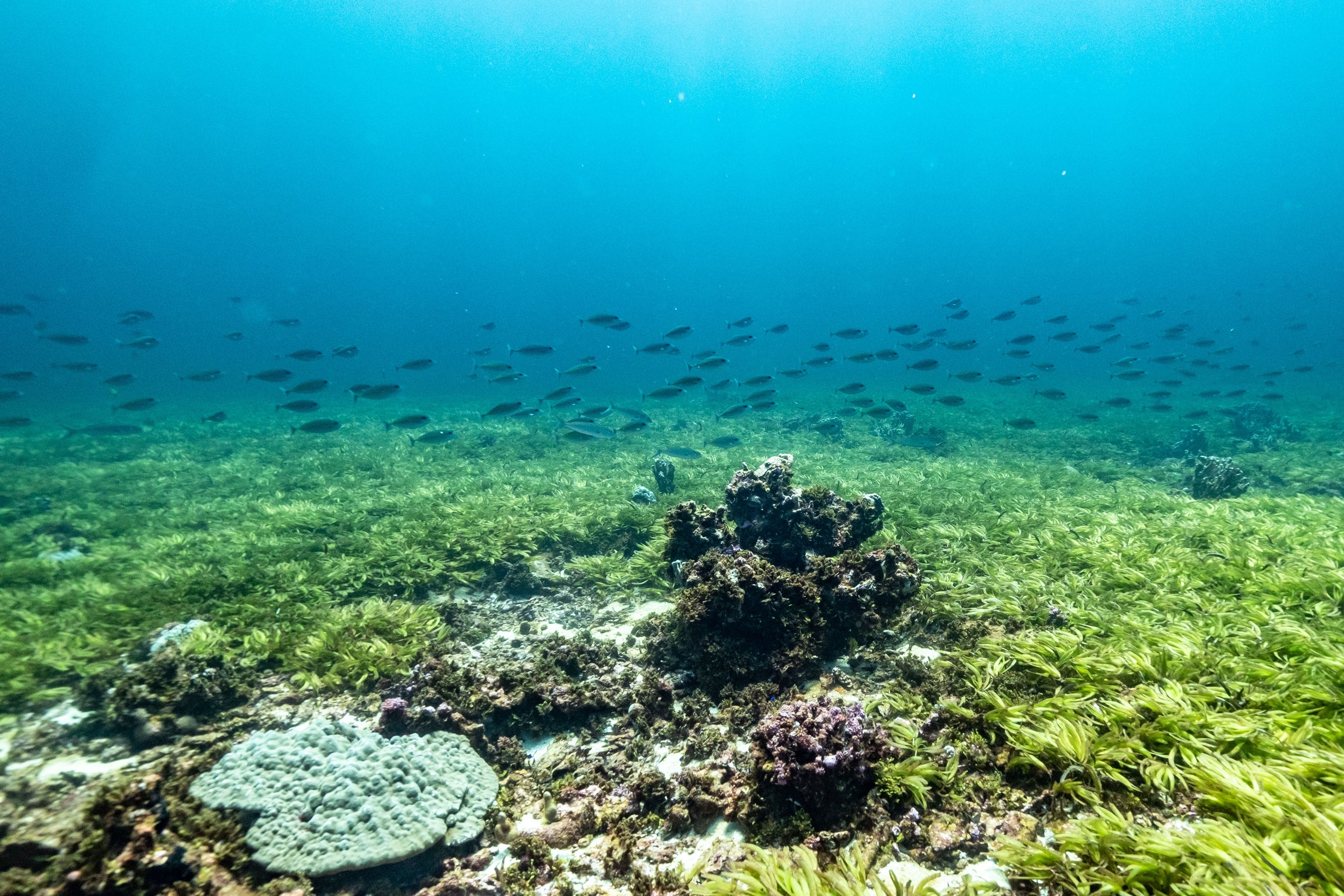I’m at the world’s largest seagrass meadow – and it’s under threat
Climate column: Oceans are the biggest carbon store on Earth, but their vital role in protecting the climate is jeopardised by destructive fishing practices


We set out onto mirror-still tropical waters aboard Greenpeace’s ship Arctic Sunrise. Within a day we were out of sight of land and the previously homogenous waves developed nuance and personality. I excitedly followed a flying fish with my gaze, watching it dissect the water and glide above the swell. The others onboard laughed at my enthusiasm and I soon understood why. Flying fish, it transpires, are the tropical ocean equivalent of pigeons: everywhere. But to me, they were both awesome and suggestive of the richness of life hidden beneath the surface.
A few days into our trip, we arrived at our first destination, on the surface indistinguishable from the miles of ocean we had covered. I am writing now from above the Indian Ocean’s Saya de Malha Bank, an underwater plateau the size of Switzerland and the world’s largest seagrass meadow. Most seagrasses fringe coastlines, but the shallow depth of Saya de Malha allows sunlight to reach the seabed and in doing so, the meadows here provide shelter and feeding ground for the rich marine-life of the region.
Seagrass meadows account for less than 0.2 per cent of the world’s oceans but sequester approximately 10 per cent of the carbon buried in ocean sediment annually. The UK’s Office for National Statistics has calculated that seagrasses, muds, sands and saltmarshes already capture at least 10.5 million tonnes of carbon dioxide equivalent a year in the UK alone: greater than Britain’s woodlands.
In addition to storing over twice the amount of carbon per square mile as land forests, seagrasses also help reduce the acidity of ocean waters. The process of ocean acidification has been driven by increasing levels of carbon dioxide in the atmosphere that in turn is absorbed into oceans. In the past 200 years, oceans have taken on a third of the CO2 produced by human activity, and the vast majority of the extra heat caused by emissions. This comes at a cost to marine and human wellbeing. Increased ocean acidity makes it more difficult for certain organisms, such as corals and shellfish, to build their skeletons and shells. Rising ocean temperature leads to increased ocean stratification, changes in ocean currents, sea-level rise, extreme weather events, and impacts ocean ecosystems.
Oceans are the world’s largest store of carbon – a process that has been millennia in the making. I’ve been listening to audiobooks whilst working around the boat: power-hosing the decks and scrubbing the galley. I wouldn’t have predicted that Merlin Sheldrake’s Entangled Life – a book about fungi – would offer the most poetic descriptions of how our oceans came to be such an important carbon sink. During the Devonian period, 300 to 400 million years ago, plants grew rapidly and in doing so drew down carbon from the atmosphere, which was then buried after death as soils and sediments. In a complex process involving rock minerals, plants, fungi and carbon dioxide, marine organisms were able to make shells, piling up over millions of years on the ocean floor as an enormous carbon burial ground. This long, slow process reduced carbon dioxide levels in the atmosphere and led to a period of global cooling.
What took thousands of years to achieve has been jeopardised within a century. Bottom-trawling – a widely adopted fishing practice that drags heavy nets along the seafloor – releases as much carbon dioxide as the aviation industry, according to a recently published study in Nature. As part of Greenpeace’s work here, we’re taking remote powered cameras down to the seagrass floor to document the impacts of such destructive practices.
You might ask why I as a medical doctor am concerned with the seafloor when my work is in optimising human health. The WHO called the climate the “greatest threat to global health of the 21st century” and much of this is driven by excess carbon dioxide in the atmosphere. In safeguarding and promoting our seafloor, we have an opportunity to safeguard and promote human health. This is why Greenpeace is calling for a strong “global ocean treaty” that can help protect critical climate hotspots like the Saya de Malha Bank.
Dr Rita Issa is an NHS GP and onboard medic for Greenpeace’s boat Arctic Sunrise
Join our commenting forum
Join thought-provoking conversations, follow other Independent readers and see their replies
Comments